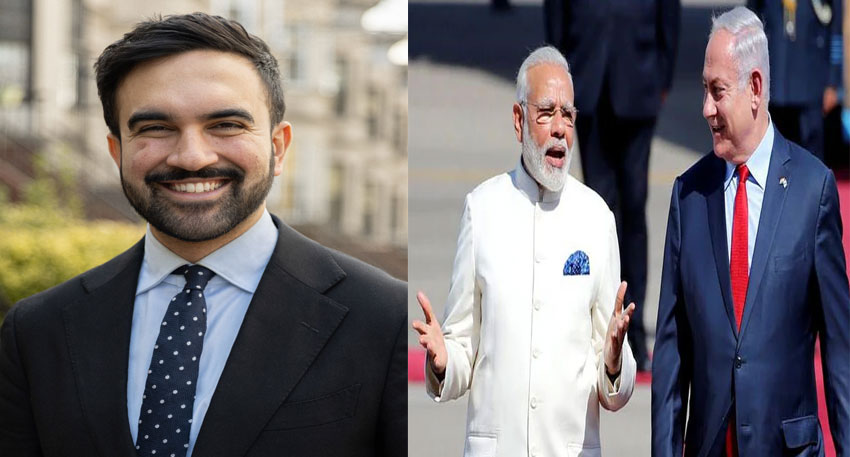
The contours and political uses of anti-Semitism is monetized mainly in the United States and Western societies. While genuine anti-Semitism reveals incidents ranging from hate crimes to bigoted arrogance from leaders in the USA and policy discrimination against pro- Palestinians, a analogous singularity has arisen: the strategic distortion of anti-Semitism accusations to advance political agendas, stifle legitimate criticism of state policies, and suppress speech and activism especially regarding pro-Palestinian advocacy.
The case of Lizzie Sevetski a Jewish American social media influencer known for “mommy blogging” interwoven with strident pro-Israel and anti-Palestinian messaging serves as a microcosm for understanding this weaponization of anti-Semitism in digital and cultural domains. Sevetski’s invocation of Jewish insecurity, tied with her espousal of gun ownership and affiliations with far-right discourses, exposes the complexities and potential dangers in this dominant discourse.
Concurrently, the Heritage Foundation’s “Project Esther” represents a top-down, institutional effort to conflate anti-Semitism with criticism of Israel, pro-Palestinian advocacy, and broader dissenting viewpoints. The resultant policies backed by Evangelical Christian Zionist theology, MAGA ideology, and sections of institutional Jewish leadership have profound implications for civil liberties, academic freedom, and the vitality of democratic debate.
This article is a critical inquiry of the origins, evolution, and impact of anti-Semitism panic and its weaponization in the current epoch. It interrogates the roles of influencers like Lizzie Sevetski, institutional projects like Esther, and the broader network of actors and policies disheveled in a push for authoritarian responses ostensibly justified by the pursuit of Jewish safety. By situating these trends within intellectual backgrounds from both the study of social movements and theoretical analysis.
I. The Persistence and Transformation of Anti-Semitism in the Modern Era
A. Historical Roots and Contemporary Experience
Anti-Semitism has a documented presence from ancient times through medieval ghettoization and exclusion, culminating in genocidal programs in the twentieth century and persisting in diverse forms worldwide. In modern Western democracies, many Jews have historically experienced astonishing level of inclusion, upward mobility, and participation in cultural and civic life. However, the persistence of anti-Semitism apparent in hate crimes, vandalism of synagogues, and the proliferation of conspiracy theories, especially in online spaces creates justified anxiety about safety and community well-being.
B. The New Anti-Semitism Panic: Safety, Identity, and Political Shifts
A distinctive feature of the current era is the displacement of Jewish insecurity and victimhood from the restrictions to the center of mainstream dialogue and narrative. Rather than being primarily targets of state or mainstream cultural hostility, as in earlier eras, significant sectors of Jewish communities in the U.S., Israel, and Europe now find themselves or are described as vulnerable not so much to formal exclusion, but to up-and-coming threats from both the political right and left.
This environment is branded by a “panic” over anti-Semitism, discriminating increase of pro-Palestinian activism, rising critique of Israeli state policy, polarization of public view and the definitive reality. Claims of prevalent Jewish fear and victimization often enunciated far beyond what is analytically documented create a gaslighting effect, where legitimate criticism of state violence, land dispossession, or unequal rights in Palestine is not just debated, but criminalized as innately hateful or dangerous.
II. Lizzie Sevetski: Influencer Culture and the Personalization of Panic
A. Constructing the Narrative: Mommy Blogging Meets Zionist Advocacy
Lizzie Sevetski embodies a new genre of influencer: a woman whose public persona blends affluent lifestyle branding, parenting advice, and a relentless campaign against anti-Semitism and for pro-Israel politics. Through social media, Sevetski schemes a sense of perpetual threat claiming that simply being Jewish in America now entails constant fear for oneself and one’s children. She furthers elaborates these anxieties by recounting incidents such as feeling petrified by a Muslim Uber driver listening to a sermon a claim indistinguishable from Islamophobic paranoia dressed as concern for Jewish safety.
This genre of content is notable for its persistent blending of the domestic and the political, arraying emotional tropes that use the family and mostly children as props for broader ideological messaging. Further, Sevetski does not hesitate to create imagery and narrative that depict Palestinians as an existential threat and all Muslims as suspect a move that has drawn criticism for being manipulative, pathologically fixated on victimhood, and for blurring the distinction between active security concerns and inherited bigotry.
B. Luxury, Guns, and the Paradox of Privilege
In spite of occupying a position of material privilege, Sevetski’s messaging centers on the necessity for Jewish self-defense, including the right indeed, the perceived obligation for Jews to arm themselves. This invocation of “survival” implicitly line up with right-wing American gun culture, making a moral case for fortifying privileged households as if they stood on the brink of catastrophe a logic more befitting societies facing pogroms than upper-class life in contemporary urban America.
This paradox of professing utter insecurity from a position of both economic and cultural capital reverberates with Andrea Dworkin’s observation that privilege does not insulate against self-perceived disenfranchisement. Yet, in the media environment, such narrative has potent mobilizing effects, transforming subjective distress into a persuasive rationale for curtailing the rights of others.
C. Racism, Reality TV, and the Limits of Victimhood
Sevetski’s approach to anti-Semitism is further problematized by her record of making racially insensitive remarks including an incident that resulted in her removal from a reality television program. When confronted, Sevetski deflects criticism by invoking her own Jewishness and the prevalence of anti-Semitism, turning what would otherwise be a demand for accountability into a further proof of victimization.
Such personalized appeals exploit the fungibility of anti-Semitism as both shield and weapon a tactic. The capacity to frame oneself as perpetually under threat, and to define the mere act of criticism as an attack, empowers warmongering players like Sevetski to avoid responsibility, while further entrenching the boundaries of what may and may not be said in public.
III. The Institutionalization of Conflation: Project Esther and Authoritarian Policy
A. Project Esther: A Conservative Masterplan
While individuals like Sevetski wield the weaponization of anti-Semitism at the personal and cultural level, far more consequential is Project Esther the Heritage Foundation’s blueprint for legislating and enforcing a particular vision of Jewish vulnerability. Marketed as a strategy for combating anti-Semitism, Project Esther, in practice, seeks to dissolve the distinction between legitimate public discourse or activism and hate speech, conflating criticism of Israel, support for Palestinian rights, and even basic humanitarian advocacy with support for terrorism.
B. Christian Zionism and Political Weaponization
Oddly, Project Esther’s principal champions are not primarily Jewish constituencies, but white Evangelical Protestants obeying to Christian Zionist theology. This ideology states that Jewish control over the biblical Land of Israel is a precondition for messianic events—eventually envisioning the mass conversion or death of Jews as part of the end-times has achieved a position of authoritative influence, including over Israeli policy.
The contradiction here is acute: policies justified as necessary for Jewish survival are endorsed by theological visions that are, at their root, deeply anti-Semitic. Shared destructive policy objectives particularly opposition to Palestinian rights and the maintenance of exclusive state claims have produced a coalition that, under the guise of protection, advances an authoritarian model inimical to both Jewish and general safety.
C. Policy Effects: Suppression of Speech and Erosion of Civil Rights
Policies modelled after Project Esther have exerted chilling effects on free speech, most visibly on university campuses. Pro-Palestinian activism, or even the utterance of phrases like “Free Palestine,” is increasingly smeared as anti-Semitic, subjected to criminal investigation or threats of de-funding. There is no evidence of systematic harm to Jewish students from such activism.
Instead, these policies inflict real harm: they encourage self-censorship, penalize minority expression, and stoke intergroup antagonism. More insidiously, they reinforce classic anti-Semitic tropes that Jews control institutions, dictate policy, and bear collective responsibility for economic or political outcomes. Thus, while advertised as bulwarks against prejudice, these measures have the paradoxical effect of perpetuating anti-Semitic stereotypes under new banners.
D. The War on Miss Rachel: Humanitarianism as Suspect
The plight of Miss Rachel a children’s educational content creator harassed for expressing empathy for children in Gaza demonstrates how far this climate of hyper-scrutiny has extended. Her treatment, patent by accusations of anti-Semitism over acts of basic humanitarian solidarity, has created rifts not just between Jewish and Palestinian communities, but among Jewish parents themselves, some of whom find their own empathy for others now as deviant or dangerous.
Here, the weaponization of anti-Semitism achieves its most absolute form: it not only forecloses criticism of policies or institutions, but stigmatizes universalist or humanitarian commitments as themselves suspect, hastening the descent into a society where safety is defined by the exclusion and silencing of others.
IV. Representational Cartographies: How Anti-Semitism Is Mapped and Misrepresented
A. Knowledge Graphs, Fish-Bone Diagrams, and the Logic of Problem Structuring
The “inheritance” of anti-Semitism as a problem links to specific historical events, social movements, and documented acts of hate while concurrently exposing “relevance” chains where critiques of Israeli policy are conflated with anti-Semitism not through evidence, but by fiat.
B. The Dilemma of Liberal Zionism and Moderate Policing of Activism
Even among those professing liberal values, elements of American and Israeli Jewish leadership adopt a “softened” version of the Project Esther agenda, maintaining victimhood narratives while policing the boundaries of acceptable activism focusing only on keyword or “hotspot” connections rather than drilling down to causal and historical depth can mislead both practitioners and newcomers. Thus, liberal Zionism, committed to peace or coexistence, often functions to preserve the status quo of inequality by delegitimizing calls for substantive justice as “dangerous” or “extreme.”
V. Consequences: Erosion of Democratic Norms and the Reinscription of Anti-Semitism
A. Authoritarian Drift and the Paradox of Protection
The single most dangerous consequence of the weaponization of anti-Semitism is the erosion of foundational democratic norms: freedom of speech, public dissent, and equal protection under the law. When the spectacle of Jewish “insecurity” is mobilized to justify policies that criminalize protest, deport students, or threaten academic institutions with extinction a process most energetically advanced by political movements, lobbies, or theological currents with little genuine concern for Jewish well-being the stage is set for lasting damage to the social contract.
Disturbingly, this turn does not guarantee increased Jewish safety; on the contrary, it may increase collective vulnerability. By portraying all Jews as aligned with state or authoritarian powers, by representing valid concerns or criticisms as “attacks” to be suppressed, these events risk engrain precisely the conspiracy theories and scapegoating that genuine anti-Semitism thrives upon.
B. Entrenchment Across Political Spectrum: Center-Left and Center-Right Alliances
The logic that security for a minority group can only be established by the rights of others has found takers not only on the far right, but within centrist and moderate political formations. In the United States, segments of the Democratic Party have allied with conservative and Evangelical tactics, motivated, perhaps, by the desire to avoid the charge of condoning anti-Semitism and losing political support.
They fail to reckon with the reality that policies of generalized repression, once established, are seldom restricted to their original targets and become tools for wider authoritarian retrenchment.
C. The Historical Repetition of Authoritarian Fantasies
While Project Esther and its antecedents claim to offer protection, their vision is not new. Across histories and societies, from ancient tribunals to twentieth-century censures, efforts to guarantee group safety by restricting the liberties of others have eventually enlarged the capacities of the state or dominant factions at the expense of both minorities and society at large.
VI. Toward a Genuine Politics of Jewish and Collective Safety
A. Dismantling All Oppression and Advancing Universal Justice
The critique advanced in this article is not motivated by a denial of the reality of anti-Semitism, nor by indifference to Jewish safety and flourishing. Rather, it insists on the necessity of disentangling genuine struggles against anti-Semitism from their distortion into self-serving or authoritarian projects this means recognizing that safety for Jews is inextricable from the safety of all minorities, from the defense of civil rights, and from the preservation of a public sphere open to dialogue, disagreement, and reform.
B. Democratic Participation, Economic Security, and Inclusion
Policies that substitute inclusion and transparency do more to weaken anti-Semitism than the punitive, and censorious dealings advocated by authoritarian actors.
C. Building Solidarity Beyond Defensive Tribalism
Perhaps most importantly, the path forward calls for a reimagined solidarity one in which Jewish communities find common cause with other oppressed or marginalized groups, and in which safety is no longer conceptualized as a zero-sum competition for protection, but as a mutual project of justice and equity.
Epilogue
The weaponization of anti-Semitism in the personal branding of figures like Lizzie Sevetski and through institutional projects such as Project Esther, poses a active threat both to the long-standing struggle against prejudice and to the fabric of democratic society. By conflating valid criticism, humanitarian empathy, and activism with existential danger, these forces and policies alter anti-Semitism from a specific, addressable injustice into an all-purpose apparatus for silencing dissent power.
The genuine struggle against anti-Semitism must be based not on the suppression of others, nor on alliances with authoritarian interests, but on a promise to justice, equity, and the protection of civil and democratic rights for all.
Anealla Safdar, “As Israel pounds Gaza, BBC journalists accuse broadcaster of bias”, Al Jazeera, 23 November 2023, https://tinyurl.com/3vwtf8mv (accessed 1 May 2025).
“The Centre for Media Monitoring (CfMM) latest report, ‘Media Bias Gaza 2023-24’, exposing significant biases in media coverage”, Muslim Council of Britain, 24 March 2024, https://tinyurl.com/bvxdw4fx (accessed 1 May 2025).
Priyanka Shankar, Pranav Dixit and Usaid Siddiqui, “Are social media giants censoring pro-Palestine voices amid Israel’s war?”, Al Jazeera, 24 October 2023, https://tinyurl.com/bdhmztjz (accessed 1 May 2025).
“21 celebrities who have used their platforms to call for a ceasefire”, DIVA Magazine, 17 May 2024, https://tinyurl.com/36aatesc (accessed 1 May 2025).




